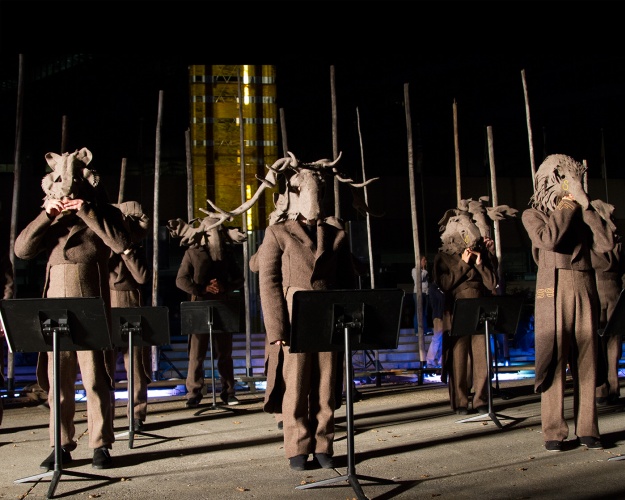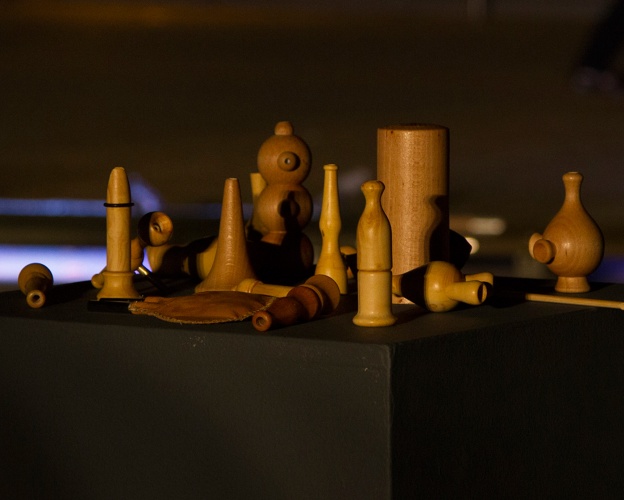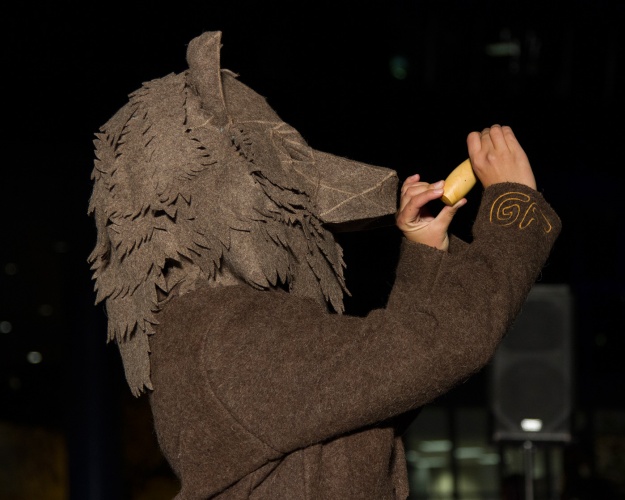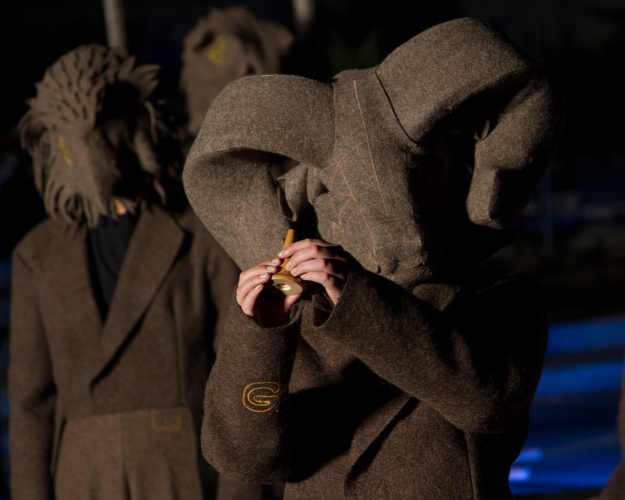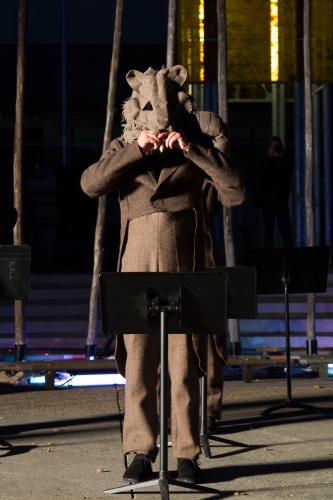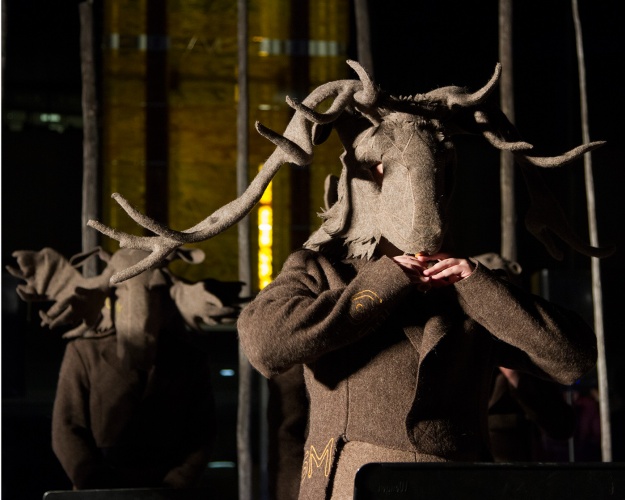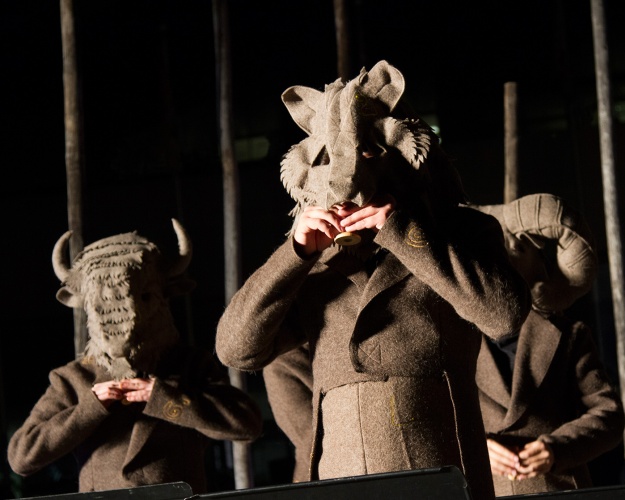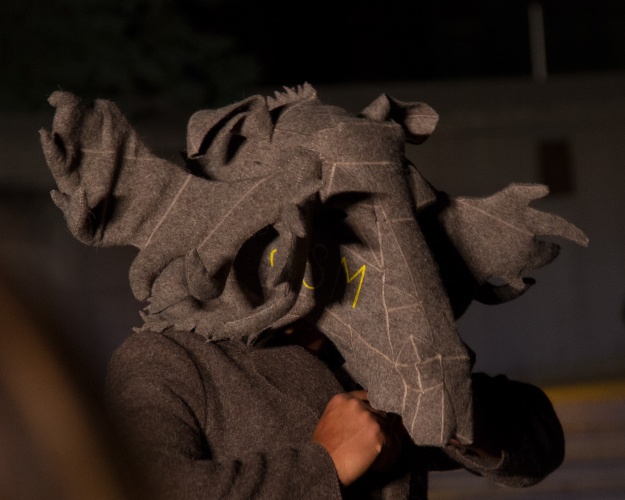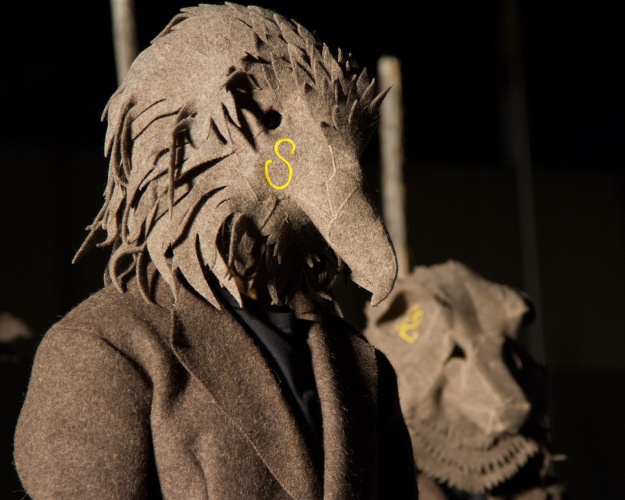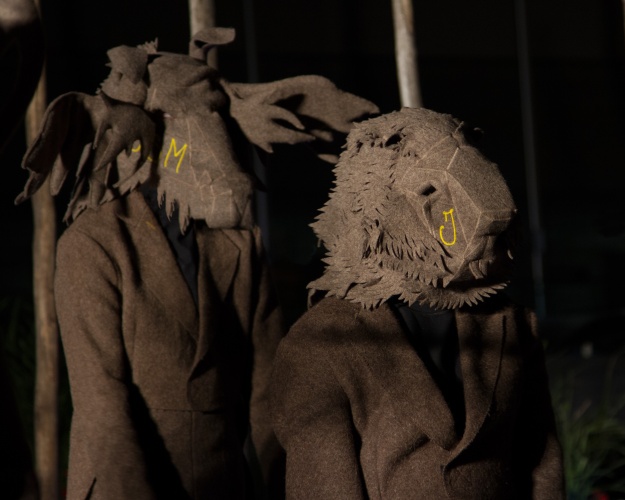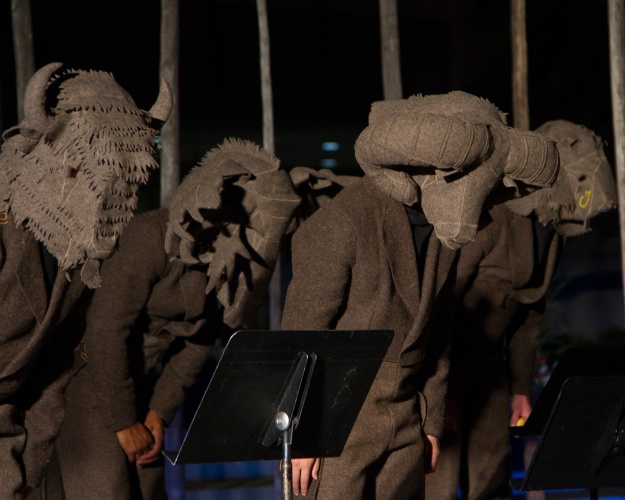Symphony for Absent Wildlife
Date:
2014
Materials:
Live performance for 19 musicians, felt army blankets, animal masks, bird whistles, tree trunks, music stands, audio sound-scape
Dimensions:
Various dimensions. Duration 14mins
Exhibition history:
2014 Nuit Blanche Calgary, Canada
Courtesy:
Lucy + Jorge Orta
In ‘Symphony for Absent Wildlife’, wool felt is a primary material motif used to narrate a story of loss. The story commences with felt point blankets that were introduced into North America by European colonial traders. From the late 17th century, the Hudson Bay Company manufactured the point-blanket in UK mills such as Wiyney and A.W. Hainsworth Company in North Yorkshire. The point-blanket was worn by the Indigenous peoples of North America adapted into a capote (hooded coat), it was traded for beaver pelts and crafted into top hats in fashion across UK and Europe. As a result of high-yield trading practices, indigenous hunters and trappers abandoned traditional practices and beliefs. The natural ecosystems were ravaged, and the beaver and other species were pushed to near extinction levels, leading to tribal conflict and ecological destruction.
In Symphony for Absent Wildlife, felted wool French army blankets are used to create the orchestra’s masks and tailcoats. The masks depict animals and birds connected with the spirit belief system of the Indigenous peoples - bison, beavers, wolves, eagles, caribou, deer, mountain goats. The accompanying immersive film depicts musicians rehearsing the symphony on hand-crafted wooden bird whistles in a London recording studio. Masked creatures roam Banff National Park on the traditional territories of the Stoney Nakoda, Ktunaxa, Secwepemc, Cree, Ojibway, and Salishan peoples, and they unite to play the symphony in front of a spontaneous audience in the plaza of the City Hall in Calgary–at the confluence of the Bow and Elbow rivers where beavers met their fate. The symphony score replicates the dawn chorus with a rich tapestry of birdsong rising to a crescendo. As dawn approaches the birdsong abruptly closes to a heart-wrenching silence, evoking the emotional loss of species and the cultures that are intertwined.
